In a world experiencing growing inequality and intolerance, tools borrowed from science and mathematics could be the key to understanding and preventing prejudice. In Chaos, Luis A. Martinez-Vaquero applies evolutionary game theory, which combines techniques from economics and biology, and complex system analysis to investigate the relationship between inequality and intolerance. He found that inequality boosts intolerance and that redistribution of wealth can prevent its infectious spread.
Tag: Chaos

Elegantly Modeling Earth’s Abrupt Glacial Transitions
Milutin Milankovitch hypothesized that the timing of glacial transitions has been controlled by the orbital parameters of the Earth, which suggests that there may be some predictability in the climate, a notoriously complex system. In Chaos, Stefano Pierini proposes a new paradigm to simplify the verification of the Milankovitch hypothesis. Pierini’s “deterministic excitation paradigm” combines the physics concepts of relaxation oscillation and excitability to link Earth’s orbital parameters and the glacial cycles in a more generic way.
Preparing for Coming RSV, Influenza Epidemics
Nonpharmaceutical interventions slowed the spread of COVID-19 and other infectious diseases but now, as NPIs are lifted, countries are seeing a resurgence in several respiratory diseases. In Chaos, scientists, using data from Hong Kong to develop their model, describe a threshold control method that can be used to predict the best time to lift NPIs without overwhelming the hospital systems when these other respiratory diseases inevitably surge back. They found that reintroducing NPI measures when a threshold of 600 severe cases is reached could ensure that the hospital system in Hong Kong is not overwhelmed by severely infected patients.
Simulations Show Weak Electrical Pulses Could Treat Atrial and Ventricular Fibrillations
With numerical simulations, researchers have demonstrated a new way to time weak electrical pulses that can stop certain life-threatening arrhythmias. Publishing their work in Chaos, the group shows that timed pulses are successful in ending atrial and ventricular fibrillations. The study provides early evidence that one theorized approach to controlling fibrillations – adaptive deceleration pacing – can improve the performance of defibrillators.
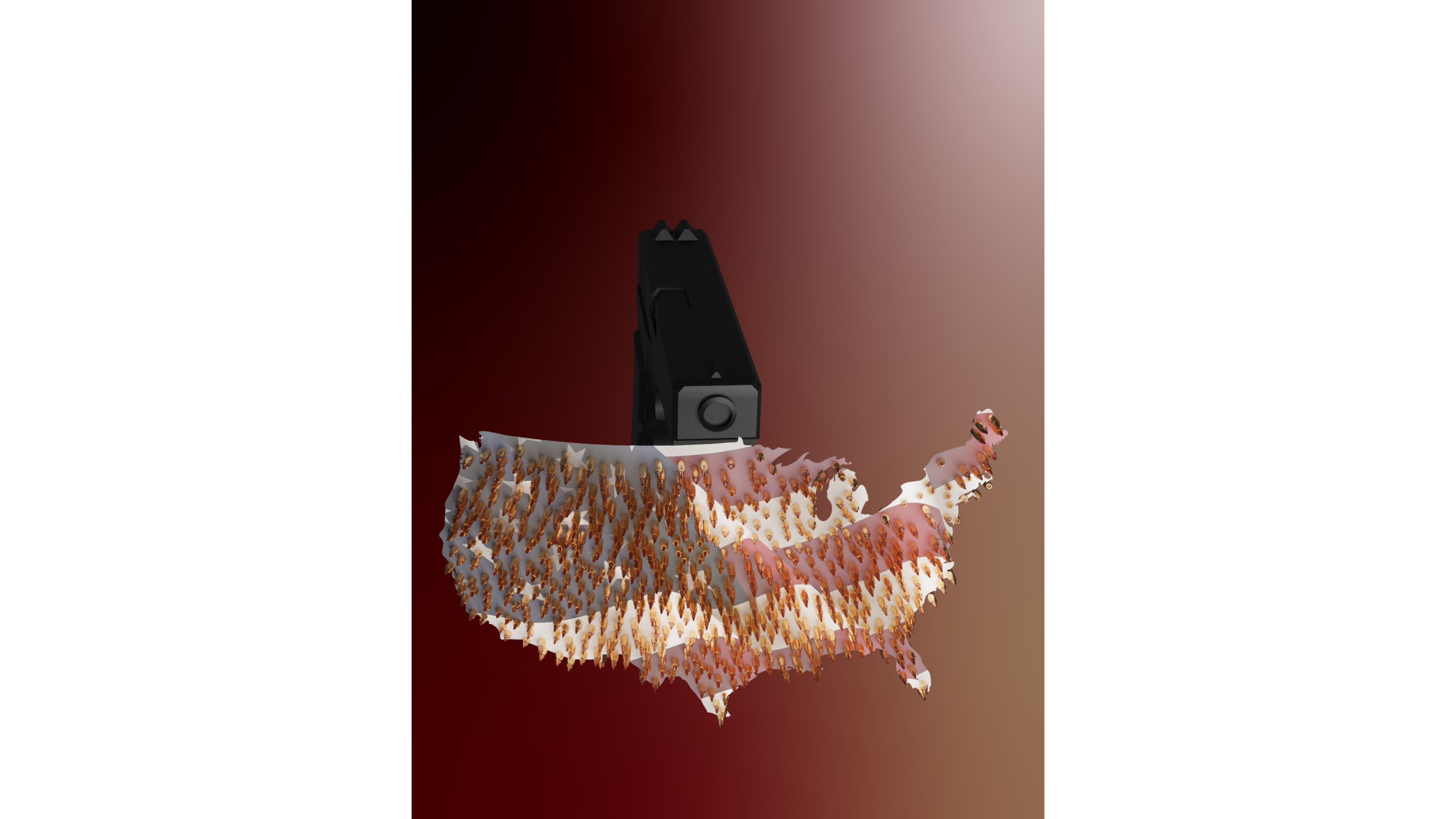
Synchronization of Firearm Background Check Data Reveals Acquisition Patterns
In Chaos, researchers explore the factors driving background checks, and whether coordination between U.S. states may exist and if one state exerts influence over others in terms of enacting gun laws or acquiring firearms. They researchers constructed a rigorous mathematical approach to interpret the patterning of firearm background check data and found these patterns of frequency oscillations are different at various time points. This suggests states may have interacted differently with each other during the terms of Bush, Obama, and Trump.
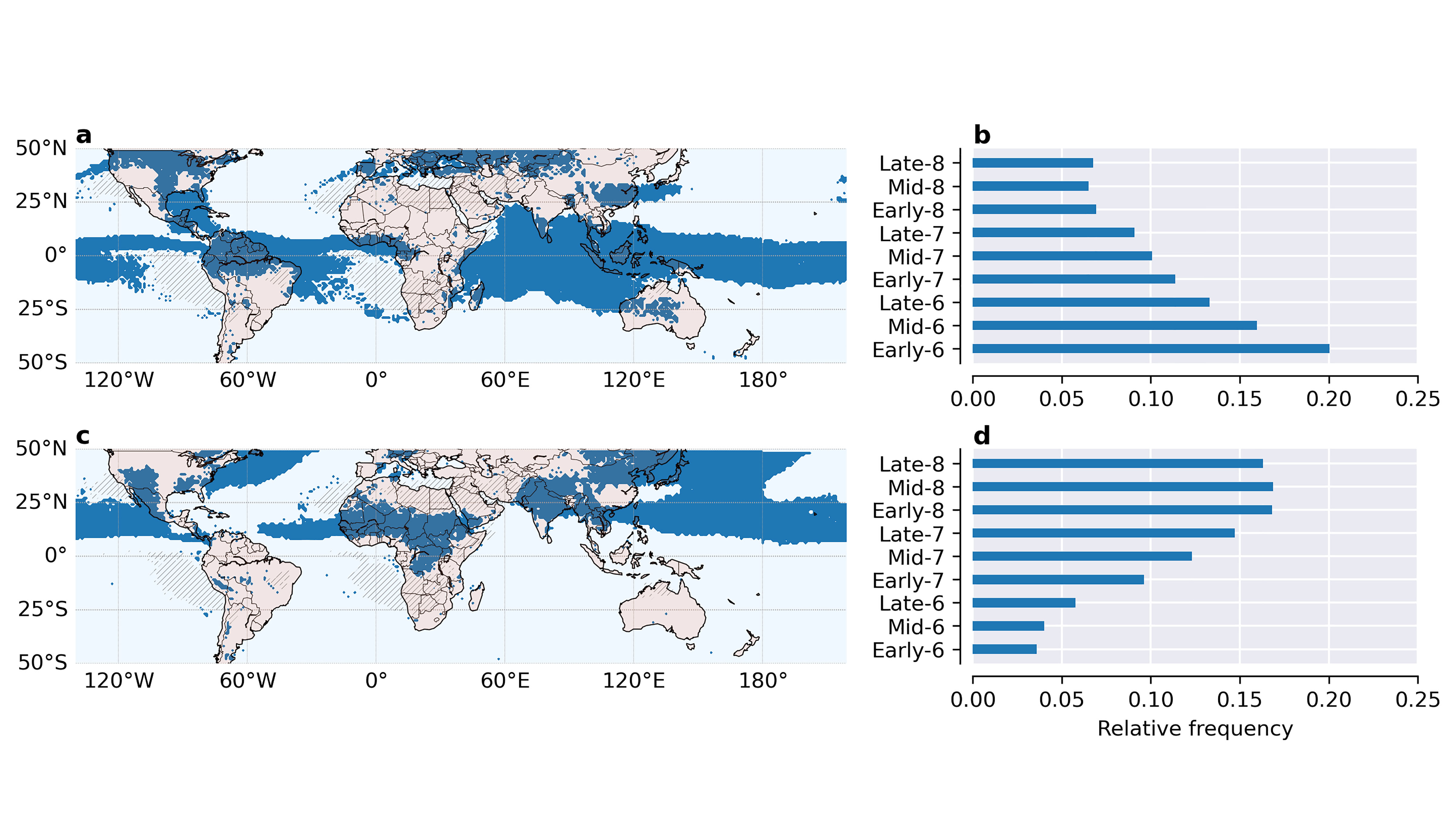
Complex Networks Help Explain Extreme Rainfall Events
In Chaos, researchers propose using a complex-network-based clustering workflow to search for synchronized structures of extreme rainfall events within the context of atmospheric chaos. By doing this, they were able to reconstruct a functional climate network to encode the underlying interaction of the climate system. Clusters on the network revealed regions of similar climatological behaviors. This means extreme rainfalls within different locations are not independent of each other but have a certain degree of similarity.
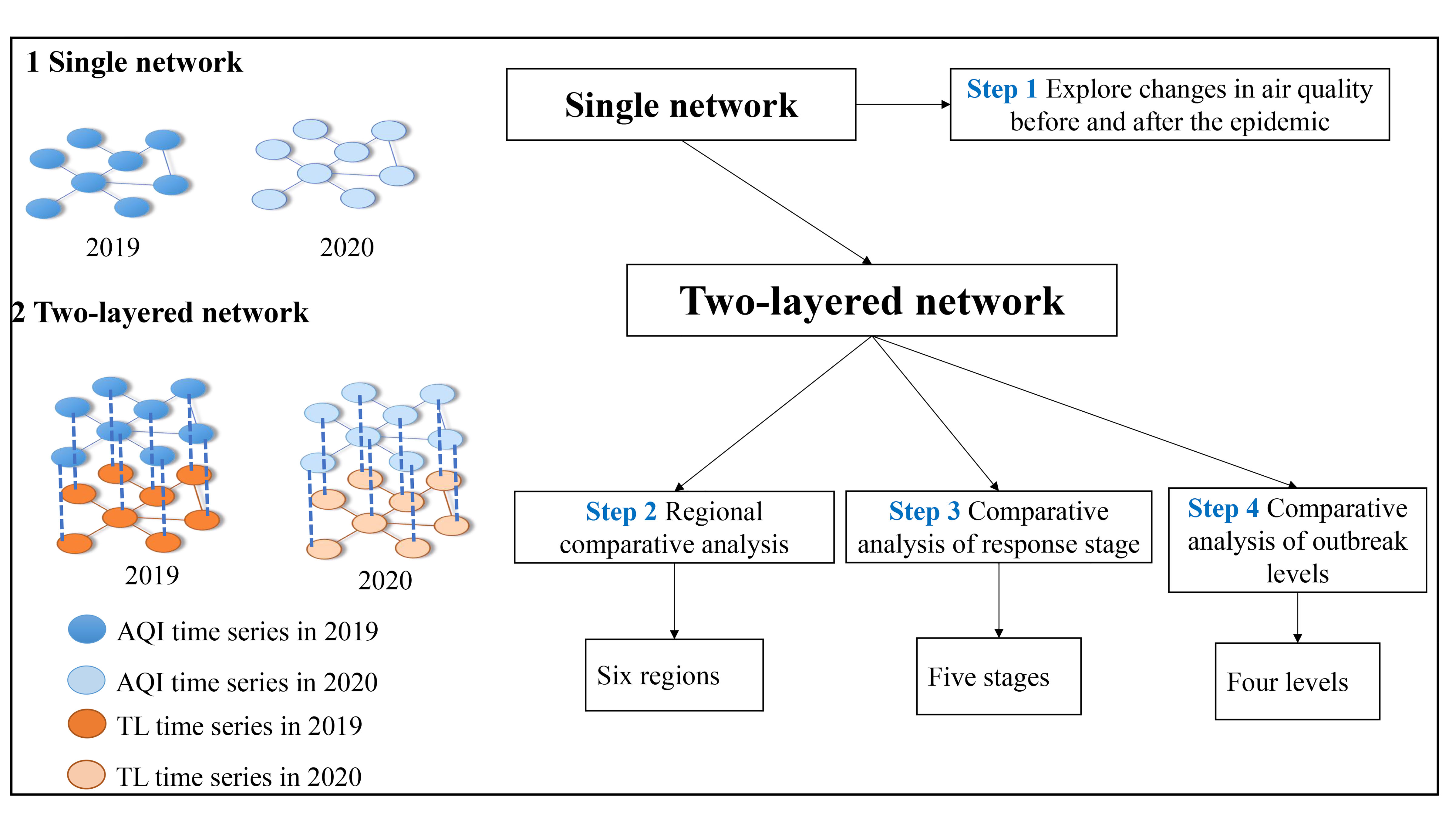
COVID-19 Lockdown Measures Affect Air Pollution from Cities Differently
In Chaos, researchers in China created a network model drawn from the traffic index and air quality index of 21 cities across six regions in their country to quantify how traffic emissions from one city affect another. They leveraged data from COVID-19 lockdown procedures to better explain the relationship between traffic and air pollution and turned to a weighted climate network framework to model each city as a node using data from 2019 and 2020. They added a two-layer network that incorporated different regions, lockdown stages, and outbreak levels.
Modeling Improvements Promise Increased Accuracy for Epidemic Forecasting
Accurate forecasting of epidemic scenarios is critical to implementing effective public health intervention policies. In Chaos, researchers from France and Italy use dynamical stochastic modeling techniques to reveal that infection and recovery rate fluctuations play a critical role in determining peak times for epidemics. Using a susceptible-infected-recovered epidemic model that incorporates daily fluctuations on control parameters, the study applies probability theory calculations to infection counts at the beginning of an epidemic wave and at peak times for populations in Italy.
Which Types of Brain Activity Support Conscious Experiences?
Our subjective experience appears to us in a continuous stream of integrated information, and in Chaos, researchers explore the question: Which characteristics should brain activity have to support this type of conscious experiences?
Julia Programming Language Tackles Differential Equation Challenges
Emerging open-source programming language Julia is designed to be fast and easy to use. Since it is particularly suited for numerical applications, scientists are using it to explore the challenges in transitioning to all-renewable power generation. Decarbonization implies a radical restructuring of power grids, which will become even more complex, so new computational tools are needed. In Chaos, researchers describe a software package they built to enable the simulation of general dynamical systems on complex networks.

Second COVID-19 Wave in Europe Less Lethal Than First Wave
As Europe experienced its enormous second wave of the COVID-19 disease, researchers noticed the mortality rate was much lower than during the first wave. This inspired some to study and quantify the mortality rate on a country-by-country basis to determine how much the rate decreased. In Chaos, they introduce methods to study the progression of COVID-19 cases to deaths during the pandemic’s different waves; their methods involve applied mathematics, specifically nonlinear dynamics, and time series analysis.
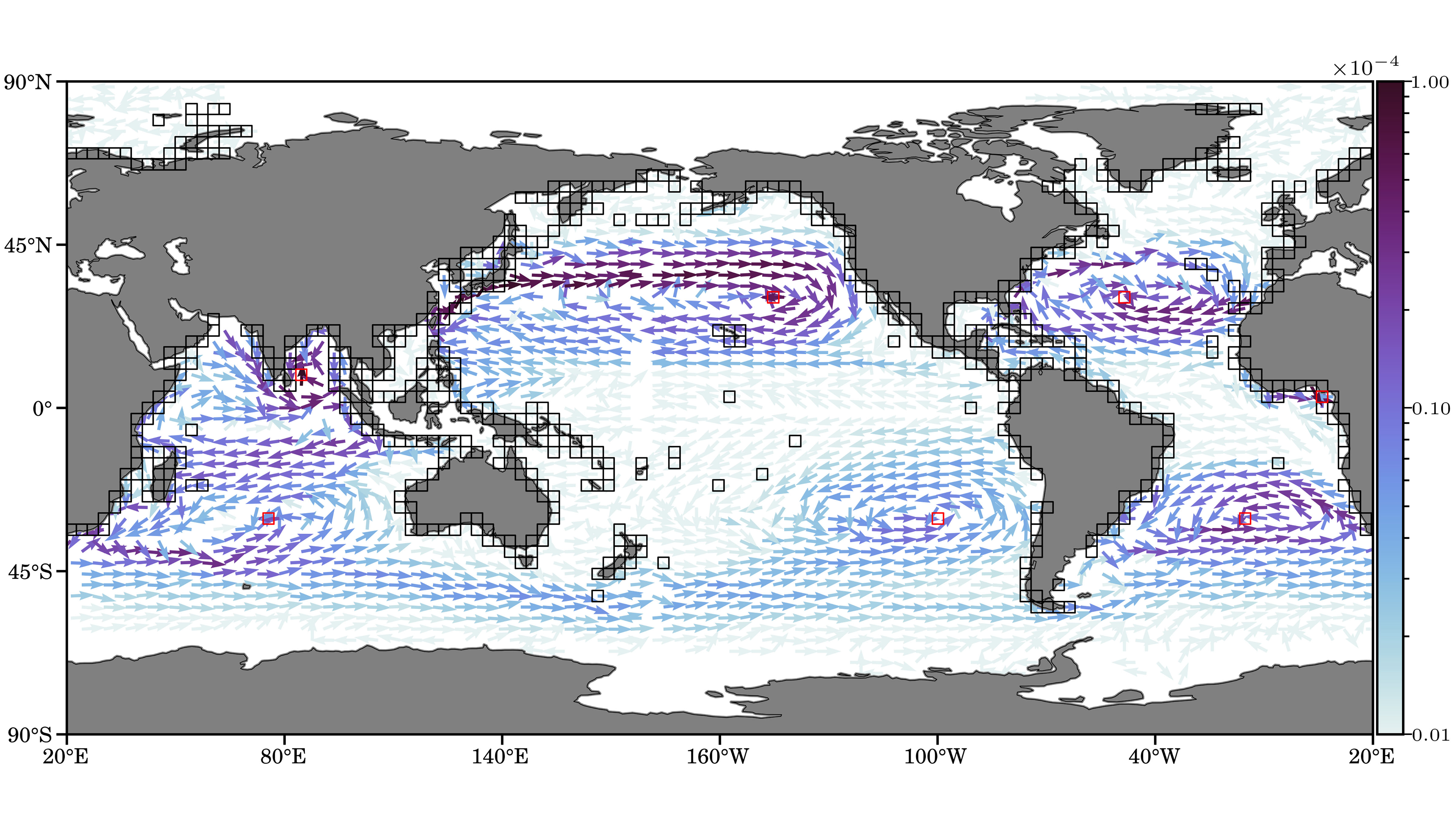
How Does Plastic Debris Make Its Way Into Ocean Garbage Patches?
Researchers in the U.S. and Germany decided to explore which pathways transport debris to the middle of the oceans, causing garbage patches, as well as the relative strengths of different subtropical gyres and how they influence long-term accumulation of debris. In Chaos, they report creating a model of the oceans’ surface dynamics from historical trajectories of surface buoys. Their model describes the probability of plastic debris being transported from one region to another.
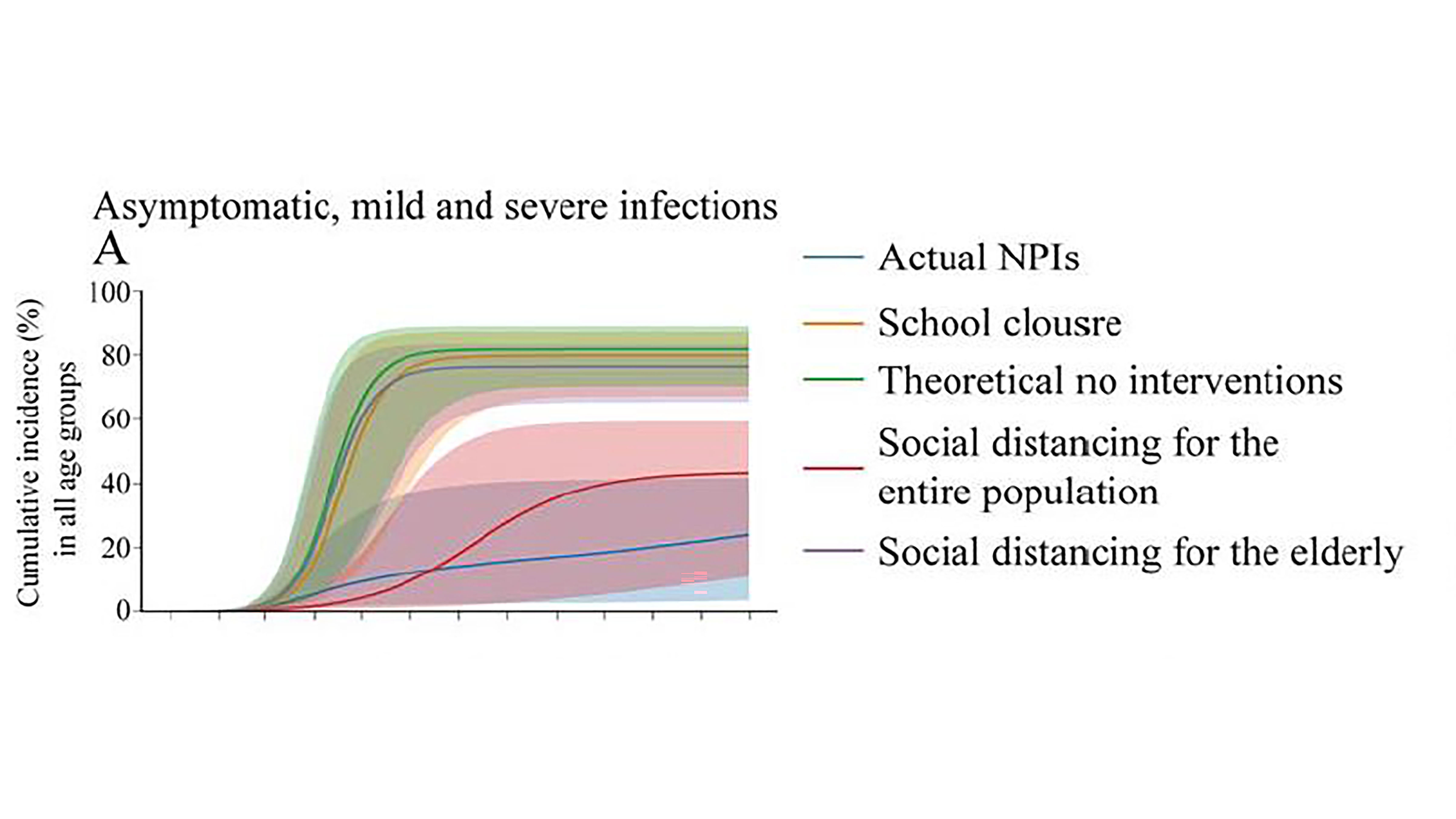
School Closures May Not Reduce Coronavirus Deaths as Much as Expected
School closures, the loss of public spaces, and having to work remotely due to the coronavirus pandemic have caused major disruptions in people’s lives all over the world. After running thousands of simulations of the pandemic response in New York City with variations in social distancing behavior, researchers suggest a reduction in fatal coronavirus cases can be achieved without the need for so much social disruption. They discuss the impacts of the closures of various types of facilities in the journal Chaos.
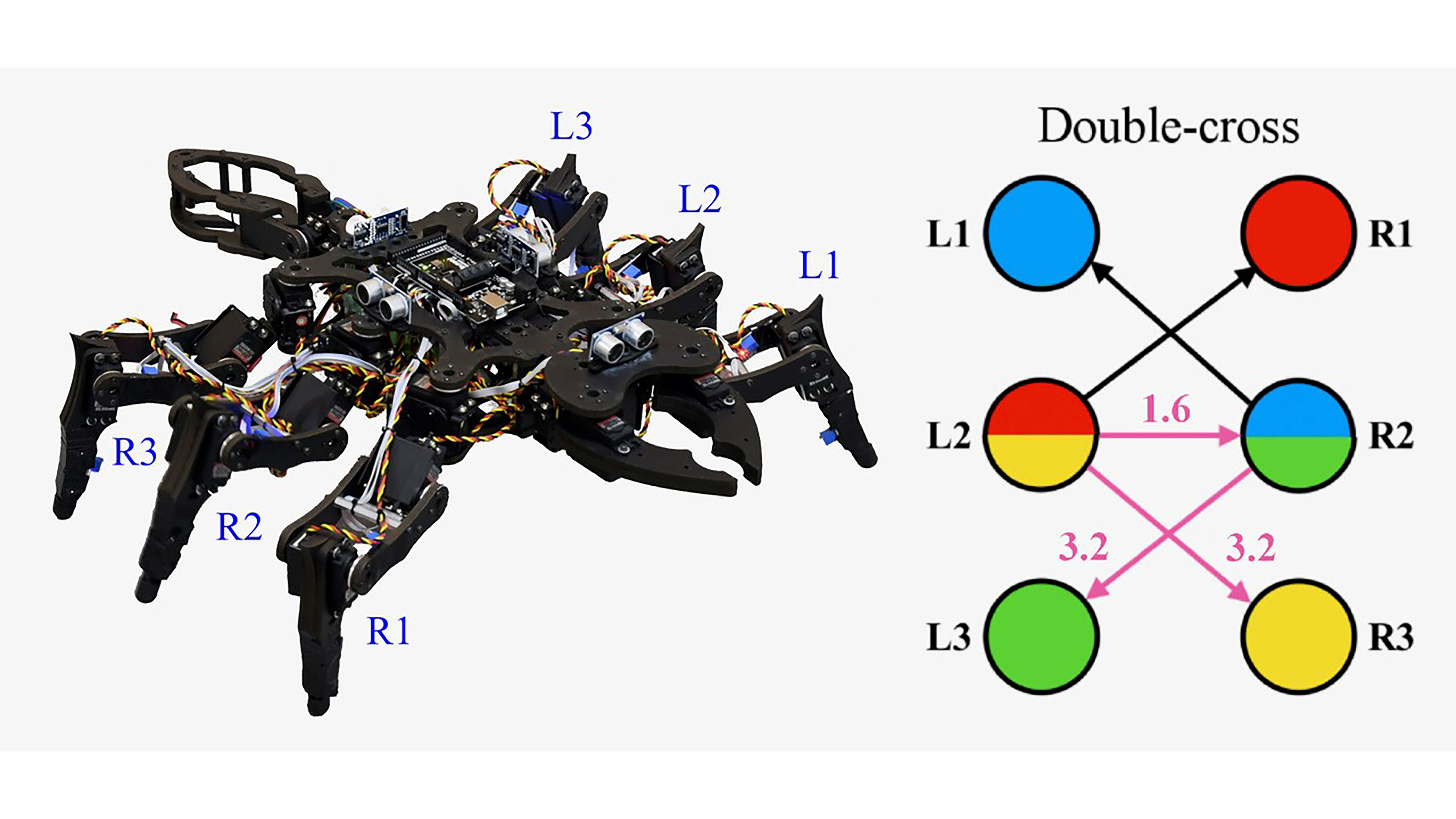
‘Chaotic’ Way to Create Insectlike Gaits for Robots
Researchers in Japan and Italy are embracing chaos and nonlinear physics to create insectlike gaits for tiny robots — complete with a locomotion controller to provide a brain-machine interface. Biology and physics are permeated by universal phenomena fundamentally grounded in nonlinear physics, and it inspired the researchers’ work. In the journal Chaos, the group describes using a system of three nonlinear differential equations as a building block for central pattern generators to control the gait of a robotic insect.
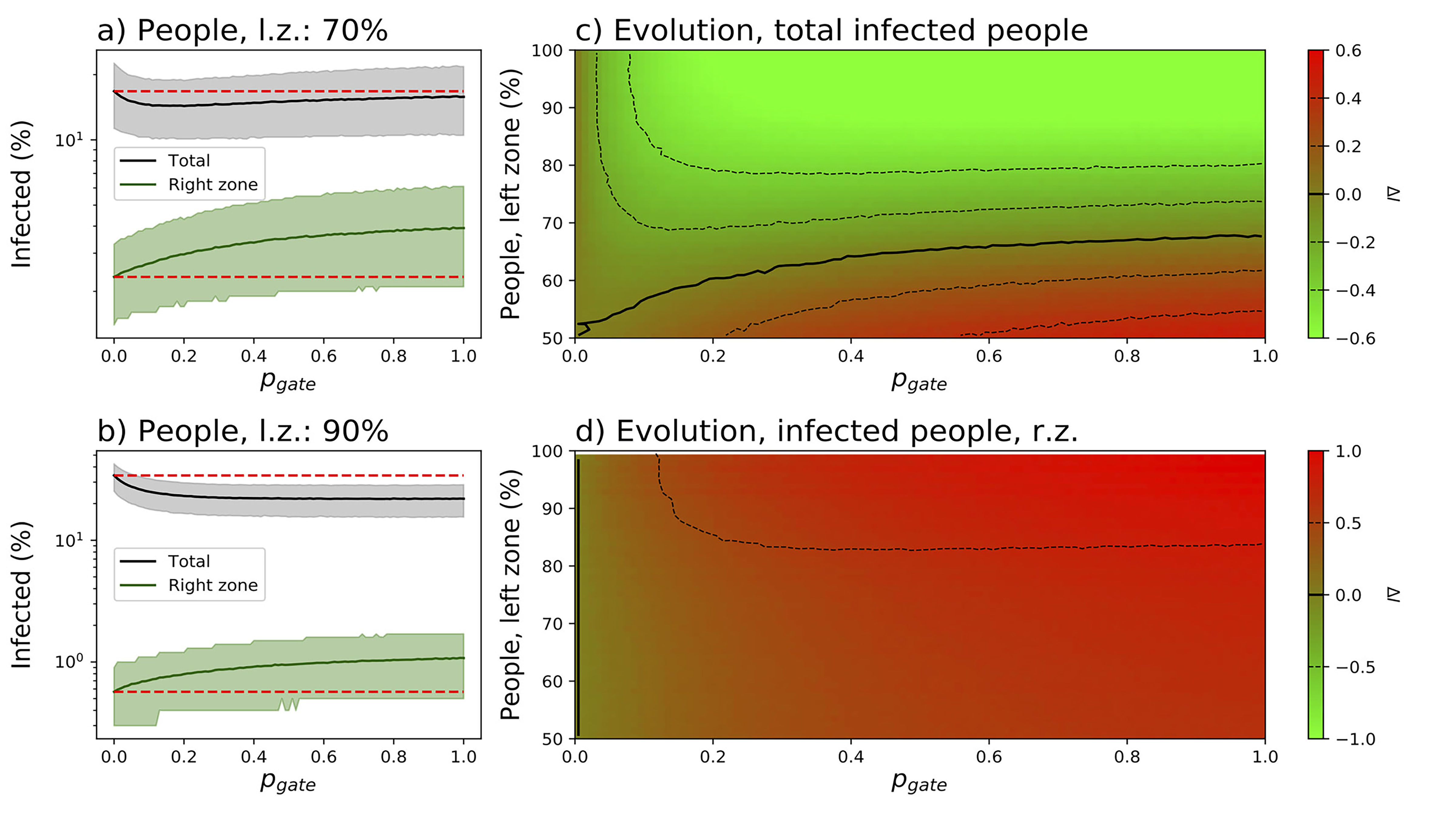
In a Pandemic, Migration Away from Dense Cities More Effective than Closing Borders
During the COVID-19 pandemic, closing national borders and borders between states and regions has been prevalent. But does it help? In a paper in Chaos, researchers decided to put this hypothesis to the test and discover if confinement and travels bans are really effective ways to limit the spread of a pandemic disease. Specifically, they focused on the movement of people from larger cities to smaller ones and tested the results of this one-way migration.
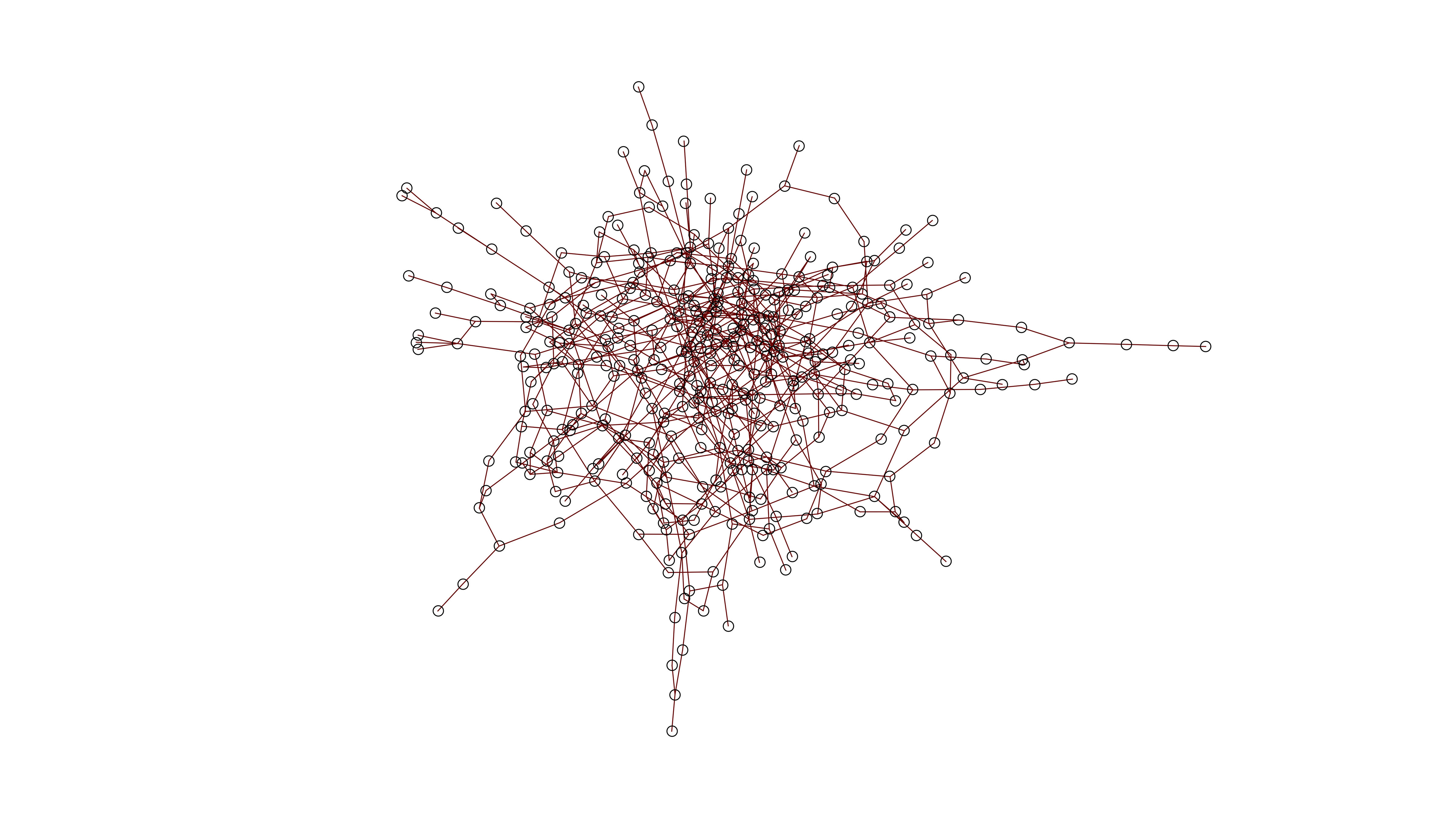
Smart Devices to Schedule Electricity Use May Prevent Blackouts
Power plants generate electricity and send it into power lines that distribute energy to nodes where it can be used. But if the electricity load is more than the system’s capacity, transmission can fail, leading to a cascade of failures throughout the electric grid. In the journal Chaos, researchers show demand side control may be an effective solution to stabilizing the reliability of power grids that use a mix of energy generation sources.
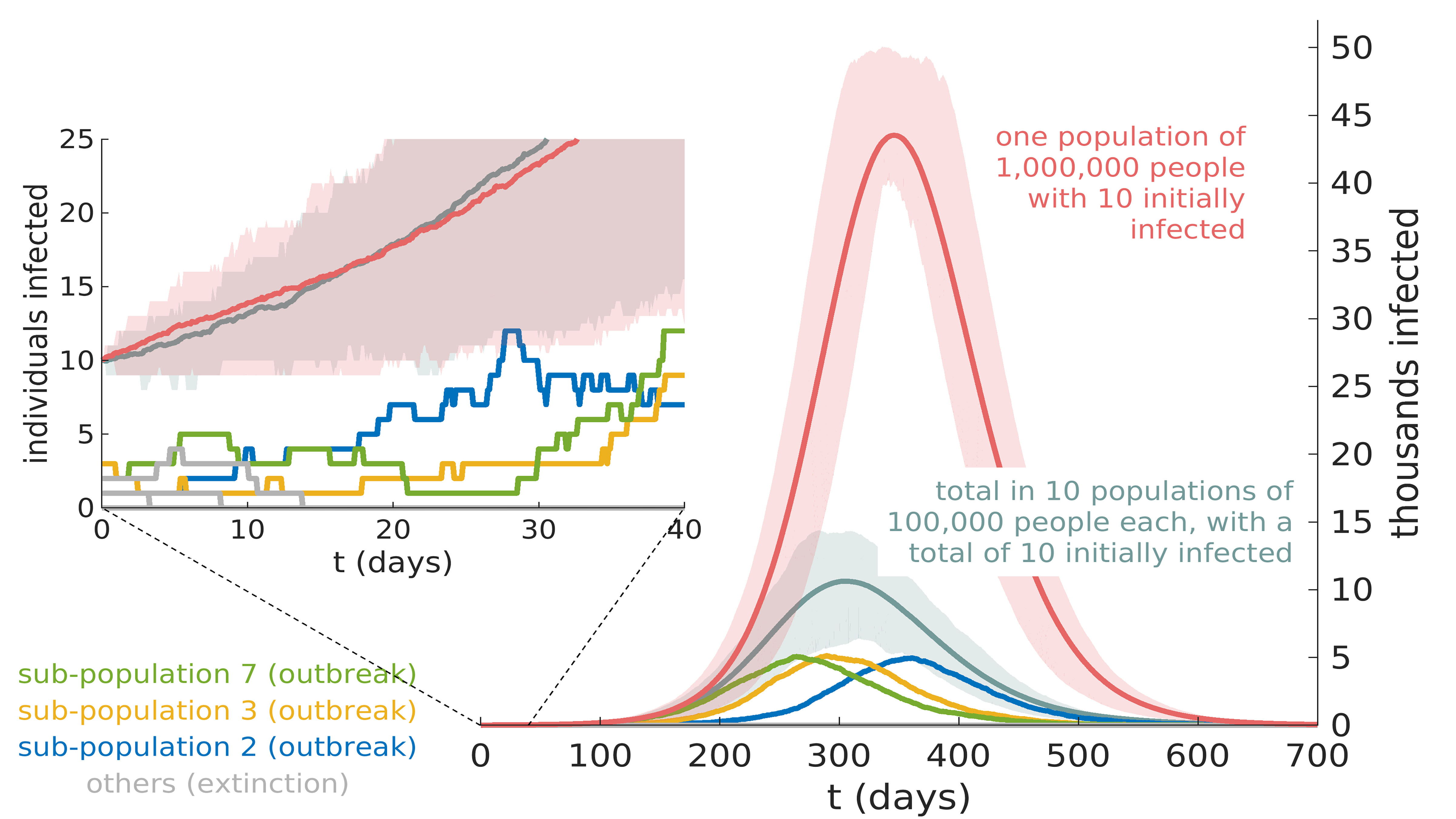
Random Effects Key to Containing Epidemics
To control an epidemic, authorities will often impose varying degrees of lockdown. In the journal Chaos, scientists have discovered, using mathematics and computer simulations, why dividing a large population into multiple subpopulations that do not intermix can help contain outbreaks without imposing contact restrictions within those local communities. When infection numbers are high, random effects can be ignored. But subdividing a population can create communities so small that the random effects matter.

Interactions Within Larger Social Groups Can Cause Tipping Points in Contagion Flow
Contagion processes, such as opinion formation or disease spread, can reach a tipping point, where the contagion either rapidly spreads or dies out. When modeling these processes, it is difficult to capture this complex transition. In the journal Chaos, researchers studied the parameters of these transitions by including three-person group interactions in a contagion model called the susceptible-infected-susceptible model. In this model, an infected person who recovers from an infection can be reinfected.

Finding Right Drug Balance for Parkinson’s Patients
Parkinson’s disease is most commonly treated with levodopa, but the benefits wear off as the disease progresses and high doses can result in dyskinesia, which are involuntary and uncontrollable movements. To better understand the underlying reasons behind these effects, researchers created a model of the interactions between levodopa, dopamine, and the basal ganglia, an area of the brain that plays a crucial role in Parkinson’s disease. They discuss their findings in the journal Chaos.
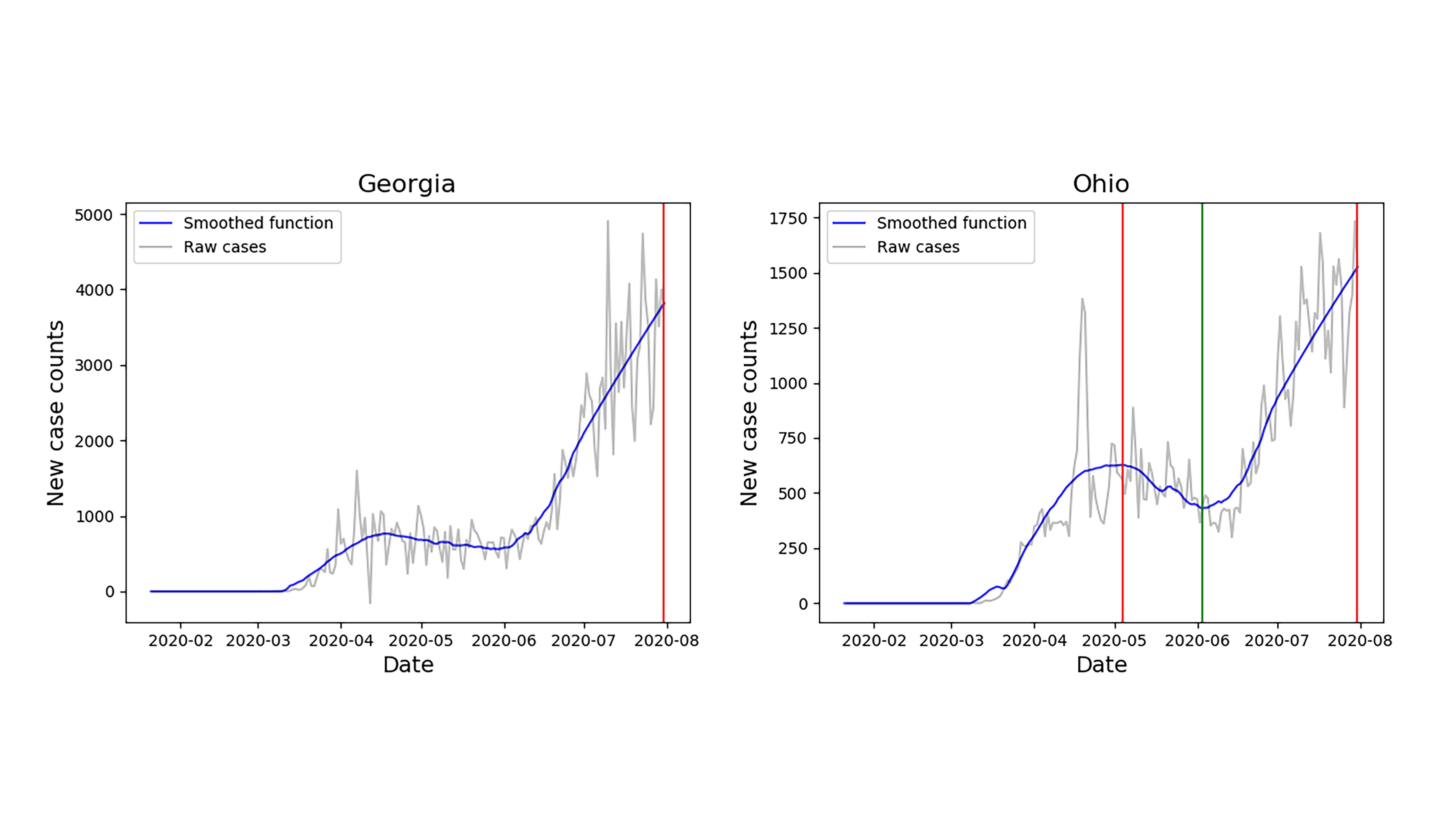
COVID-19: Second Wave for Some; Others Remain in First Wave
As the COVID-19 pandemic continues, some locations have experienced decreasing numbers of cases followed by an increase. In the journal Chaos, mathematicians report a method to analyze these numbers for evidence of a first or second wave. The authors studied data from all 50 U.S. states plus D.C. for the seven-month period from Jan. 21 to July 31. They found 31 states and D.C. were experiencing a second wave as of the end of July.
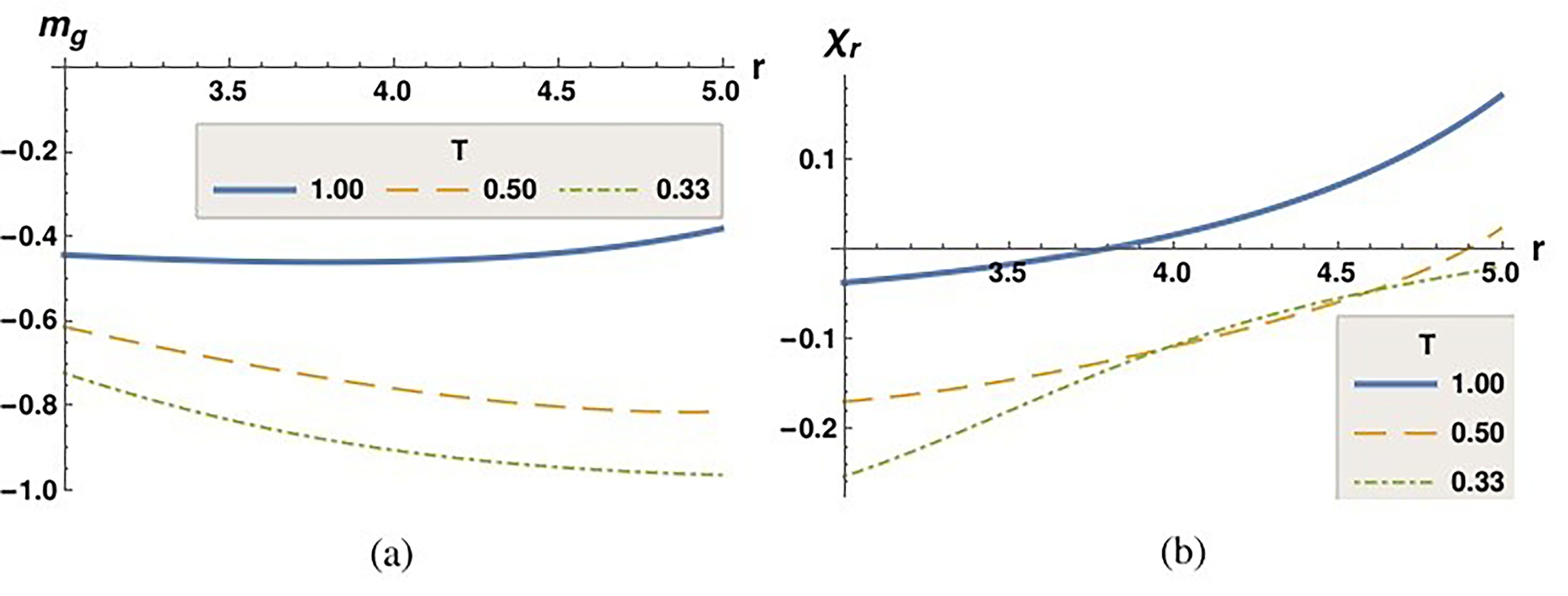
Betrayal or Cooperation? Analytical Investigation of Behavior Drivers
When looking at humanity from a macroscopic perspective, there are numerous examples of people cooperating to form various groupings. Yet at the basic two-person level, people tend to betray each other, as found in games like the prisoner’s dilemma, even though people would receive a better payoff if they cooperated among themselves. The topic of cooperation and how and when people start trusting one another has been studied numerically, and in a paper in Chaos, researchers investigate what drives cooperation analytically.
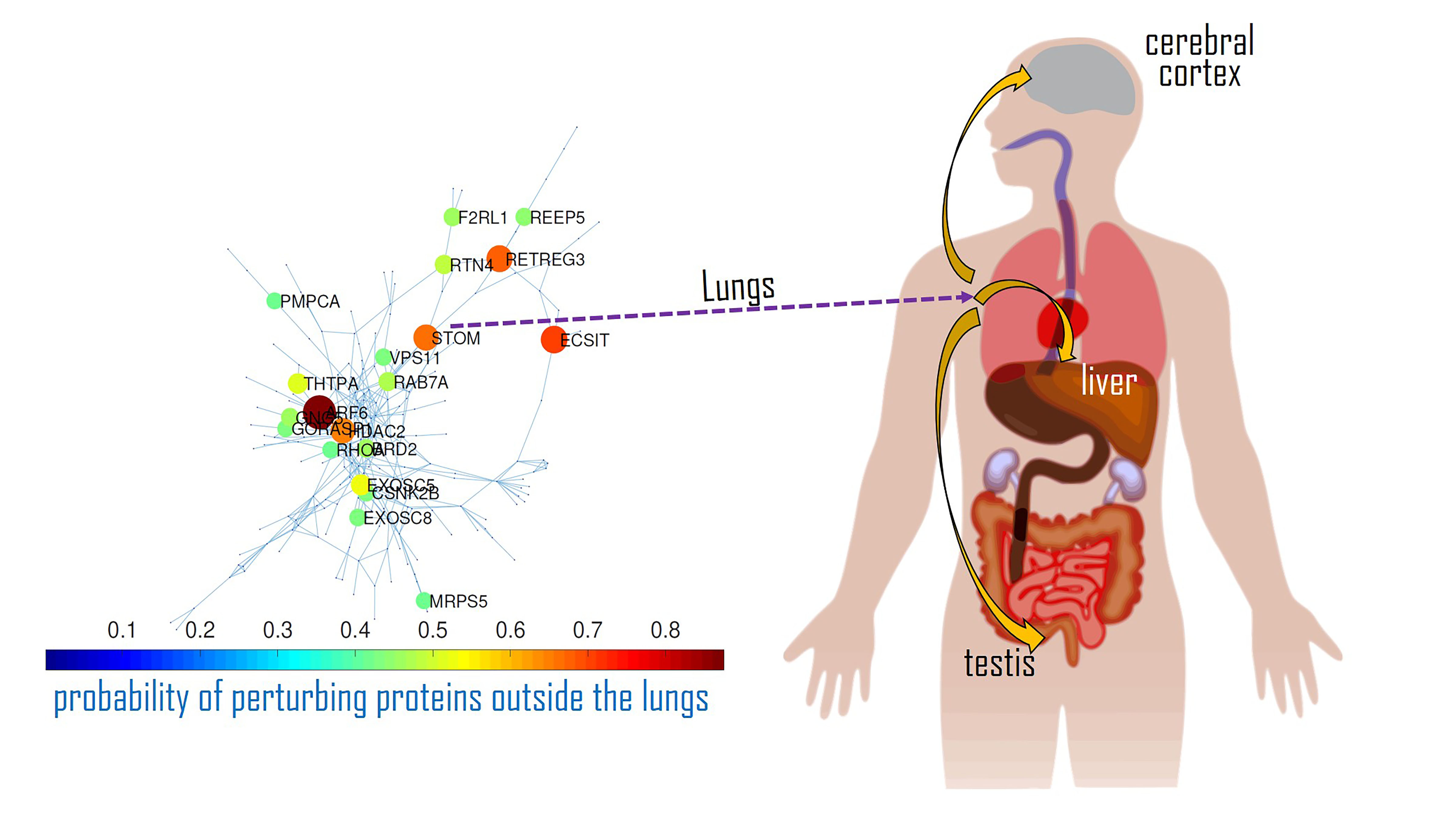
Why Does COVID-19 Impact Only Some Organs, Not Others?
In severe cases of COVID-19, damage can spread beyond the lungs and into other organs, such as the heart, liver, kidney and parts of the neurological system. Beyond these specific sets of organs, however, the virus seems to lack impact. Ernesto Estrada aimed to uncover an explanation as to how it is possible for these damages to propagate selectively rather than affecting the entire body. He discusses his findings in the journal Chaos.
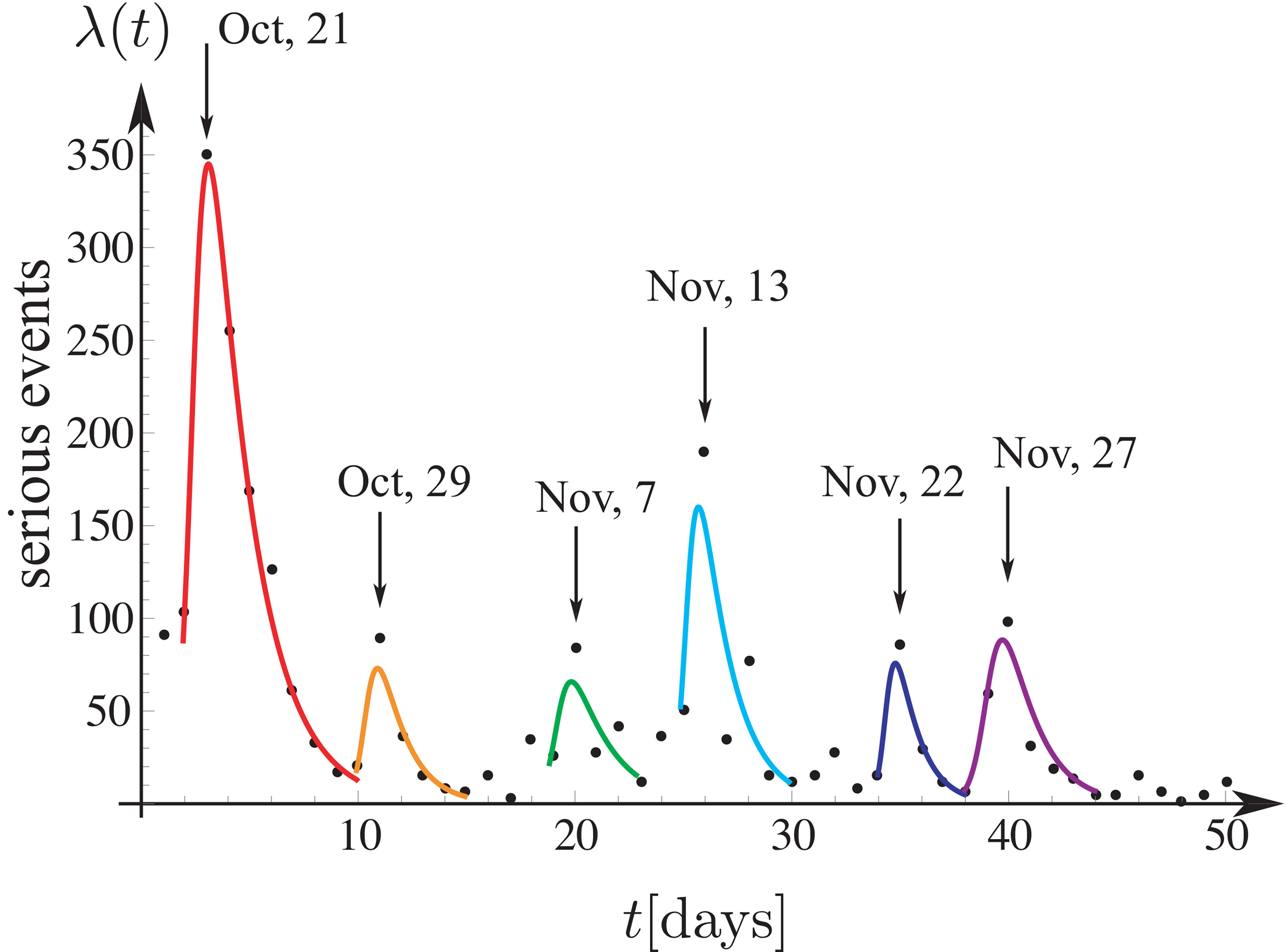
Can Social Unrest, Riot Dynamics Be Modeled?
Episodes of social unrest rippled throughout Chile in 2019. Researchers specializing in economics, mathematics and physics in Chile and the U.K. banded together to explore the surprising social dynamics people were experiencing. In the journal Chaos, the team reports that social media is changing the rules of the game, and previously applied epidemic-like models, on their own, may no longer be enough to explain current rioting dynamics.
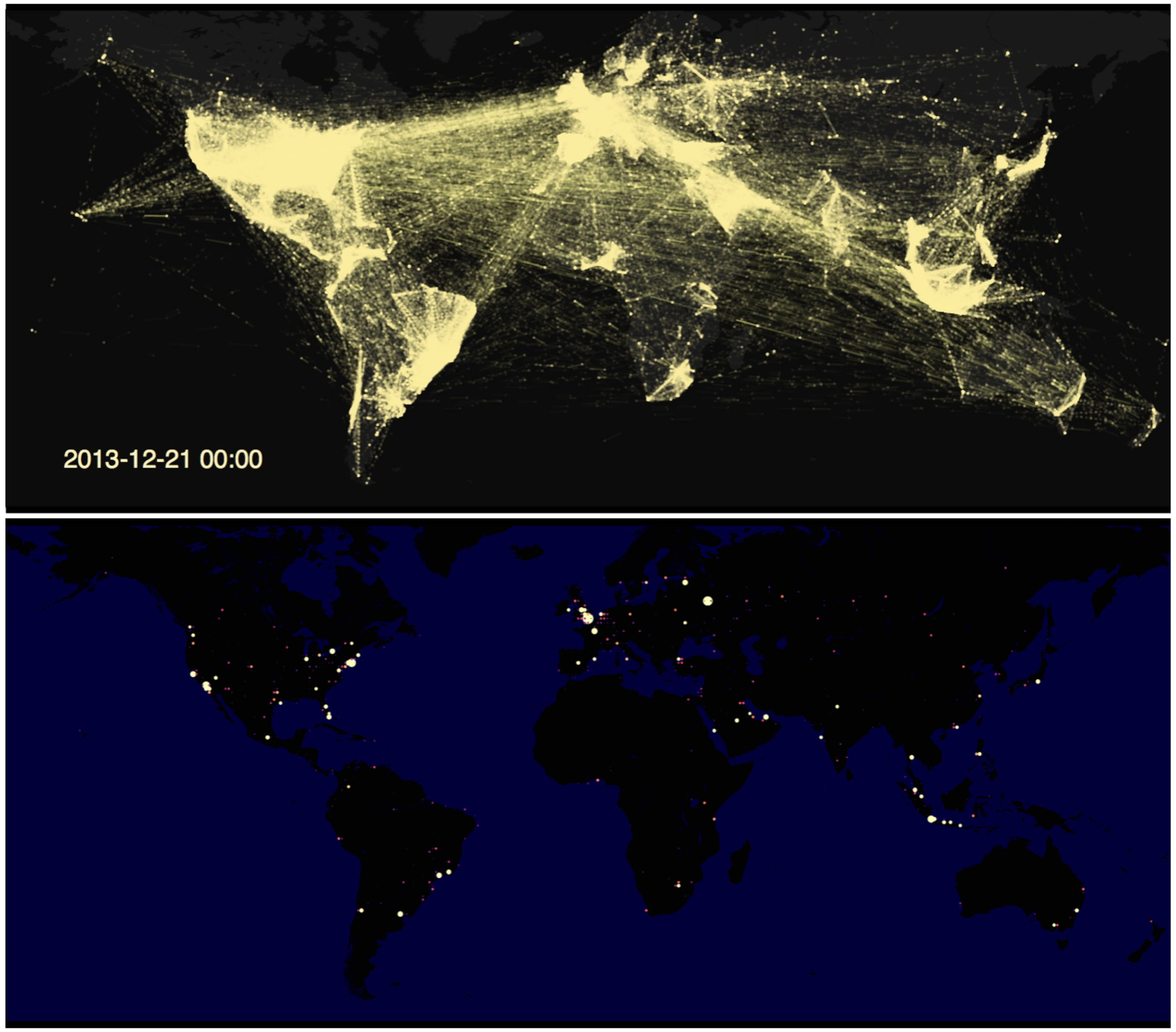
Twitter Data Reveals Global Communication Network
Twitter mentions show distinct community structure patterns resulting from communication preferences of individuals affected by physical distance between users and commonalities, such as shared language and history. While previous investigations have identified patterns using other data, such as mobile phone usage and Facebook friend connections, research from the New England Complex Systems Institute looks at the collective effect of message transfer in the global community. The group’s results are reported in the journal Chaos.
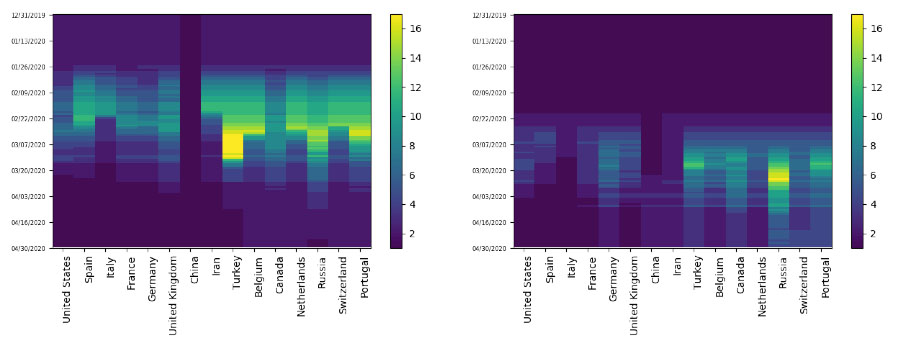
Countries Group into Clusters as COVID-19 Outbreak Spreads
Mathematicians based in Australia and China have developed a method to analyze the large amount of data accumulated during the COVID-19 pandemic. The technique, described in the journal Chaos, can identify anomalous countries — those that are more successful than expected at responding to the pandemic and those that are particularly unsuccessful. The investigators analyzed the data with a variation of a statistical technique known as a cluster analysis.
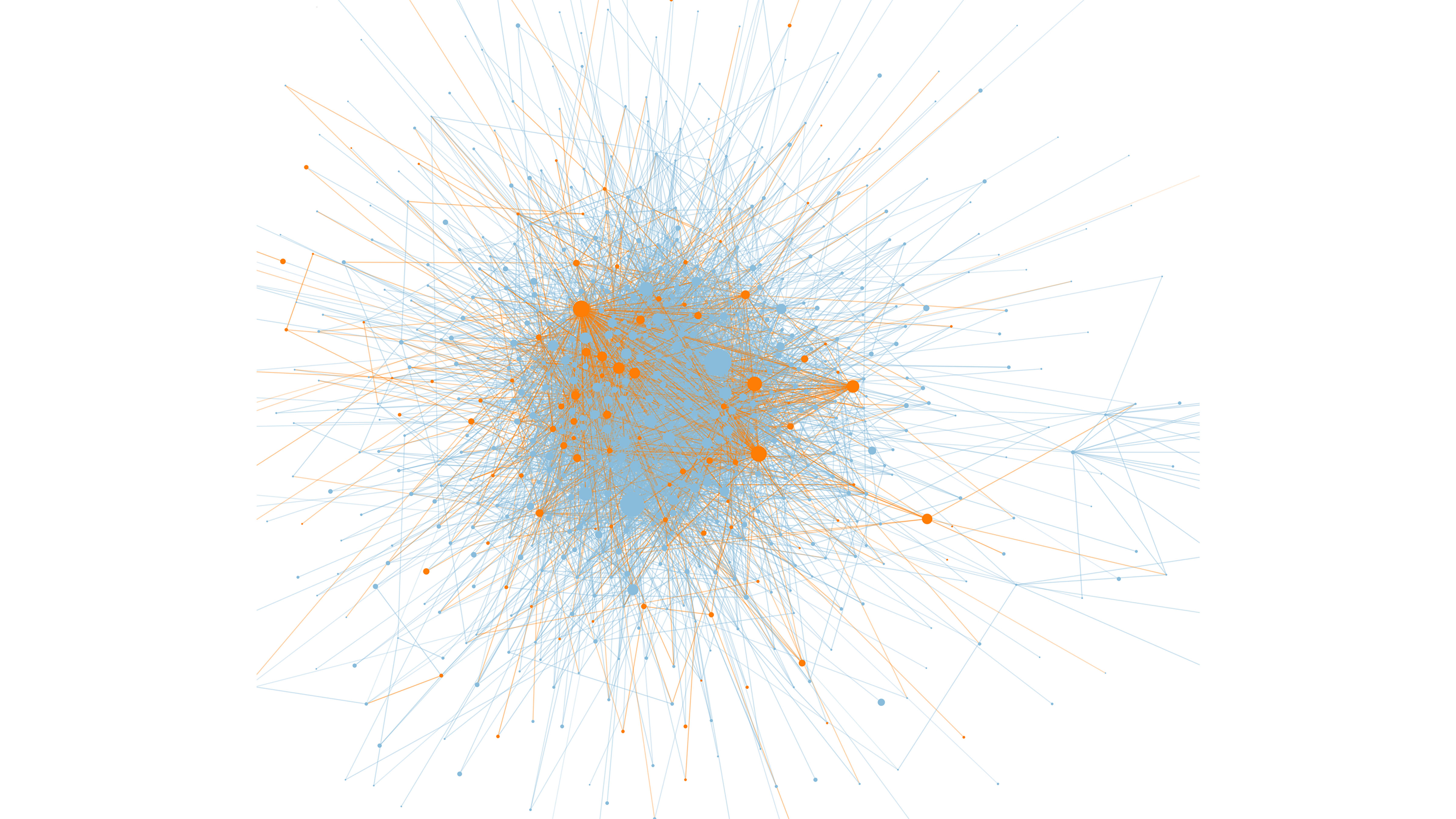
Brexit’s Effect on Research Networks: Lower Local and Global Efficiency, Reorganization of Research Communities
Brexit has affected trade and security, but scientists wanted to know how it might also affect the EU Framework Programmes for Research, known as Horizon 2020. In this week’s Chaos, authors examined a network of 19,200 research organizations to determine how removing U.K. organizations affects three Horizon 2020 programs: Excellent Science, Industrial Leadership and Societal Changes. They looked at percolation theory, and networks were examined in terms of global efficiency, local efficiency and mesoscopic-scale effects.
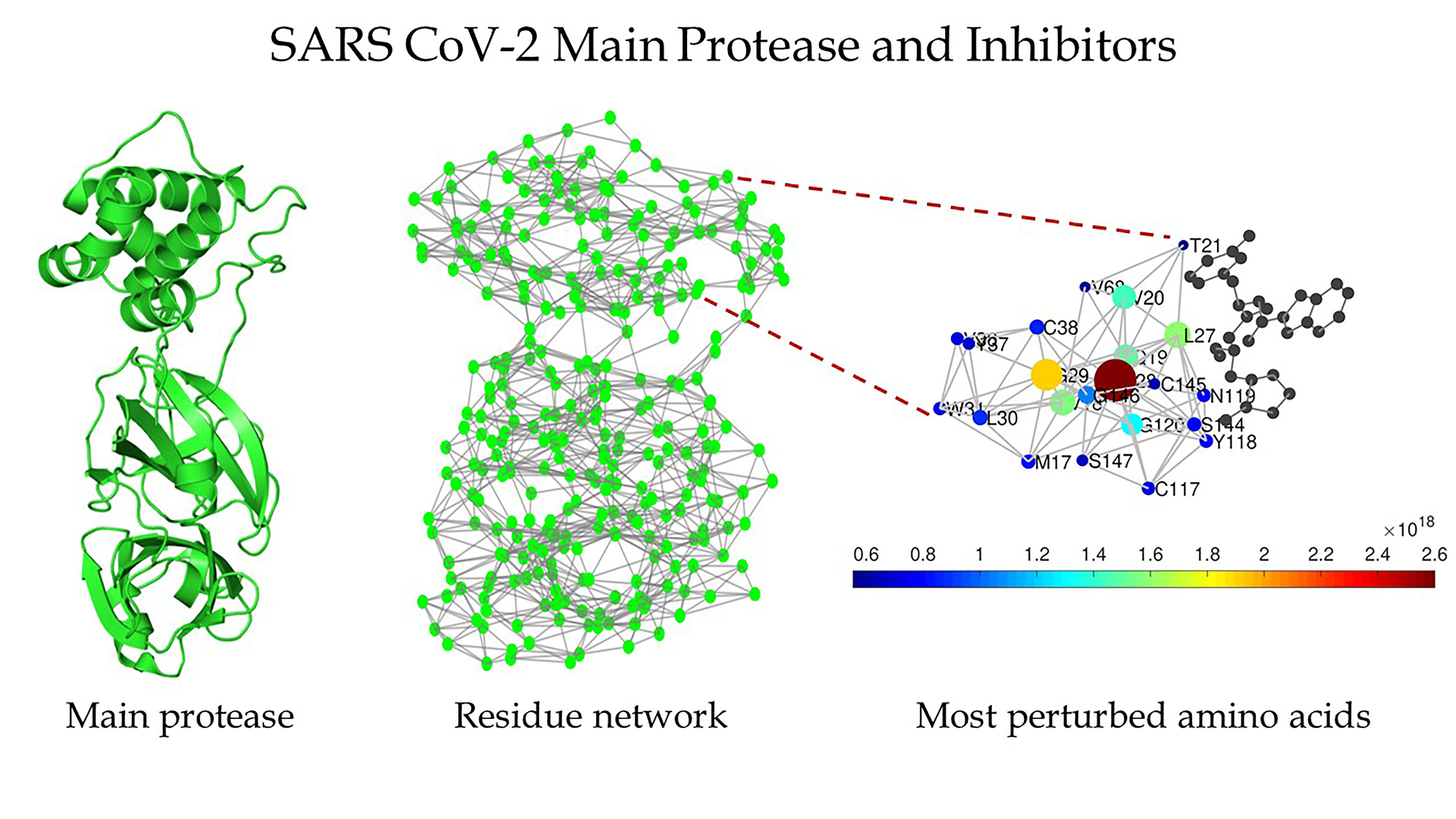
Targeting SARS-CoV-2 Enzyme with Inhibitors
As the COVID-19 pandemic continues to spread, many researchers are studying epidemiological models to predict its propagation. However, a mathematician and expert in complex systems decided to focus on finding targets within SARS-CoV-2 for new drugs to attack. In the journal Chaos, he discusses the dramatic increase in the sensitivity of the main protease of SARS-CoV-2 to small disturbances, which made him suspect there is a role for inhibitors to play in killing the virus.

Critical Transition Theory Shows Flickering in Heart Before Atrial Fibrillation
Atrial fibrillation ranks among the most common heart conditions, and episodes are difficult to predict. Researchers have proposed a way to define cardiac state and have studied the dynamics before the cardiac rhythm changes from normal sinus to AF rhythm and vice versa. The work, appearing in Chaos and based on critical transition theory, looks to provide an early warning for those with paroxysmal atrial fibrillation with potential implications for future wearable devices.
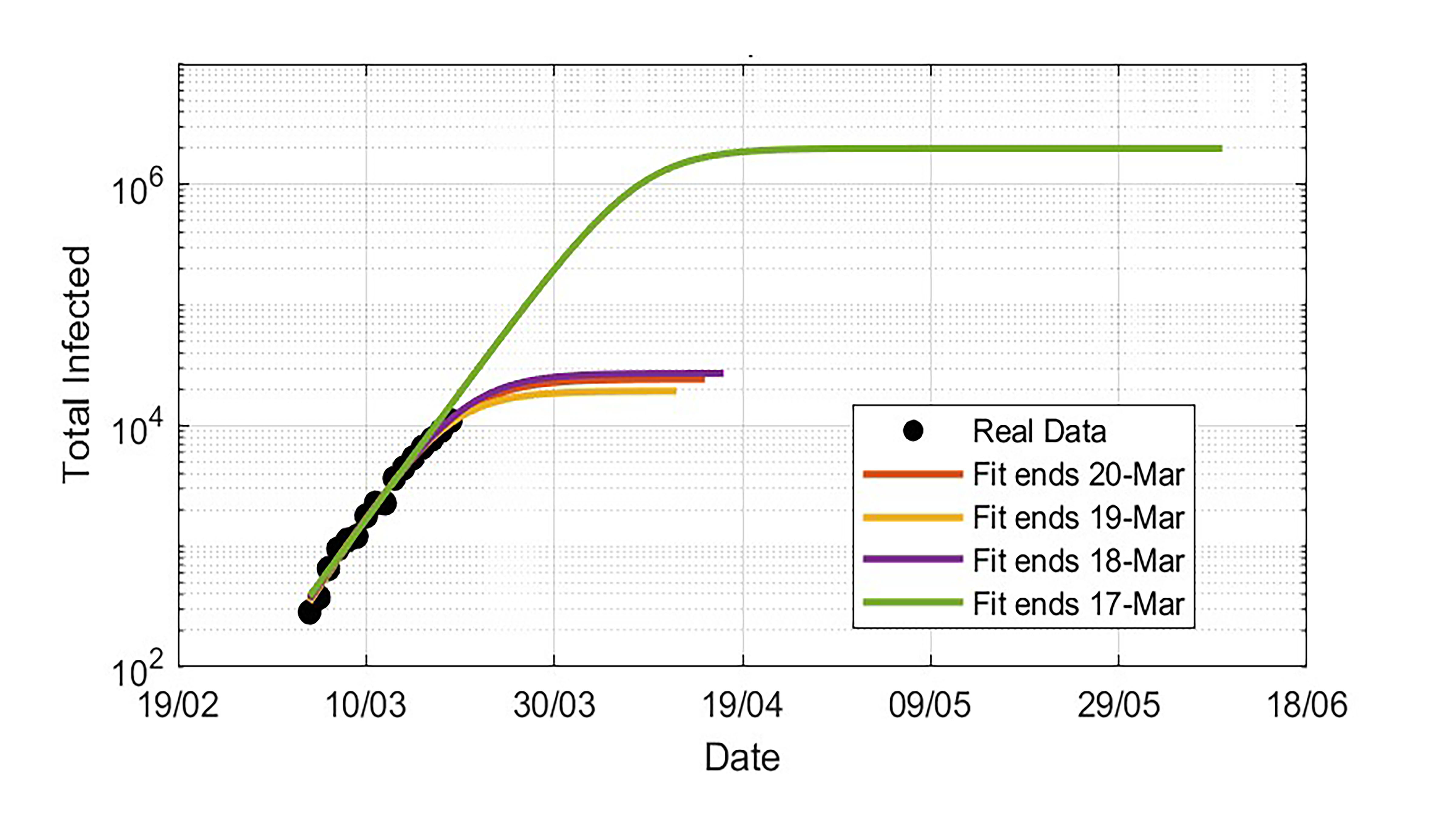
Modeling COVID-19 Data Must Be Done With Extreme Care
As the virus causing COVID-19 began its devastating spread, an international team of scientists was alarmed by the lack of uniform approaches by various countries’ epidemiologists. Data modeling to predict the numbers of likely infections varied widely and revealed a high degree of uncertainty. In the journal Chaos, the group describes why modeling and extrapolating the evolution of COVID-19 outbreaks in near real time is an enormous scientific challenge that requires a deep understanding of the nonlinearities underlying the dynamics of epidemics.
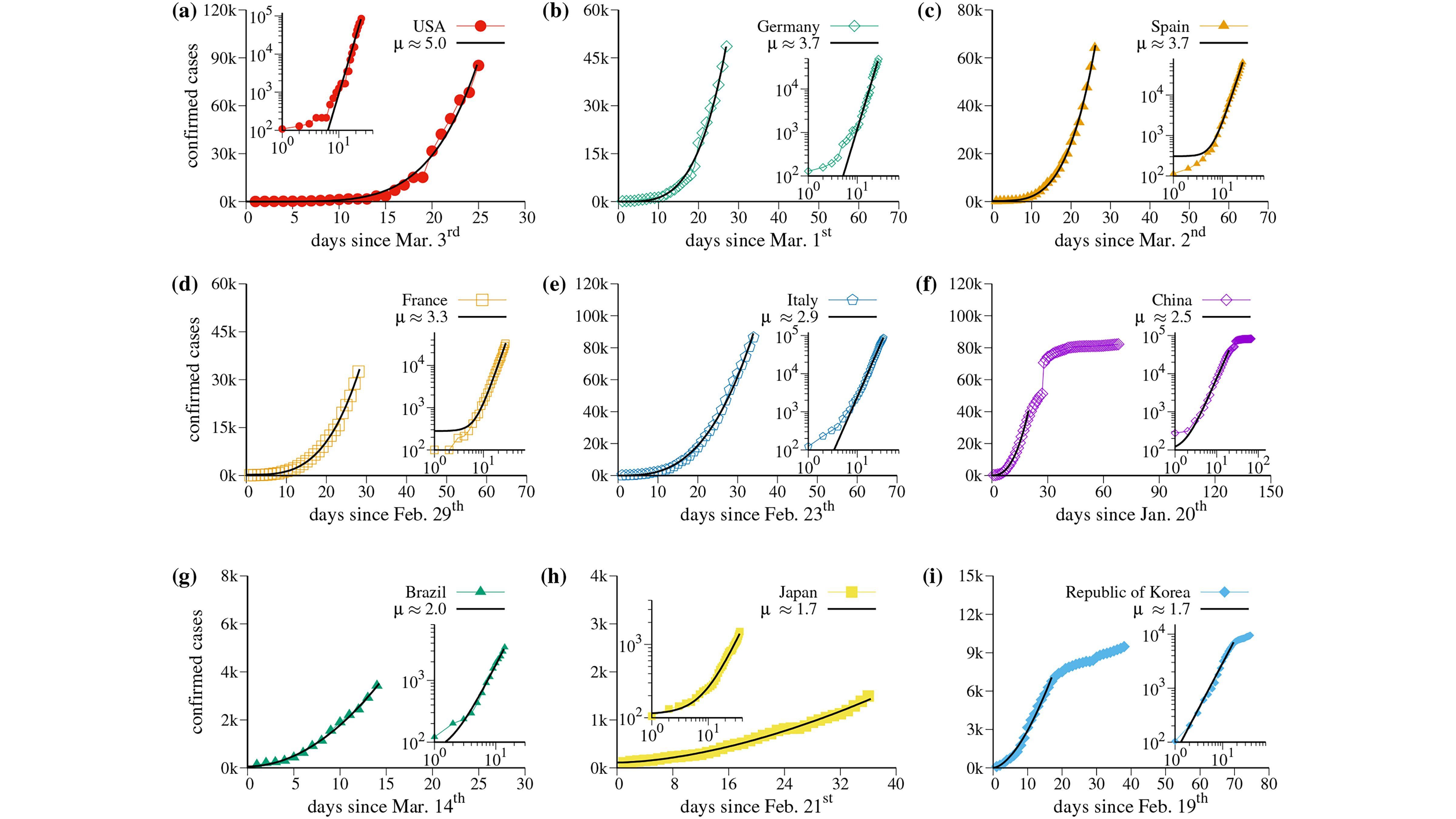
Correlations in COVID-19 Growth Point to Universal Strategies for Slowing Spread
Many months since the first COVID-19 outbreak, countries continue to explore solutions to manage the spread of the virus. Chaos theory researchers analyzed the growth of confirmed cases across four continents to better characterize the spread and examine which strategies are effective in reducing it, and their results, published in Chaos, found the virus commonly grows along a power law curve.
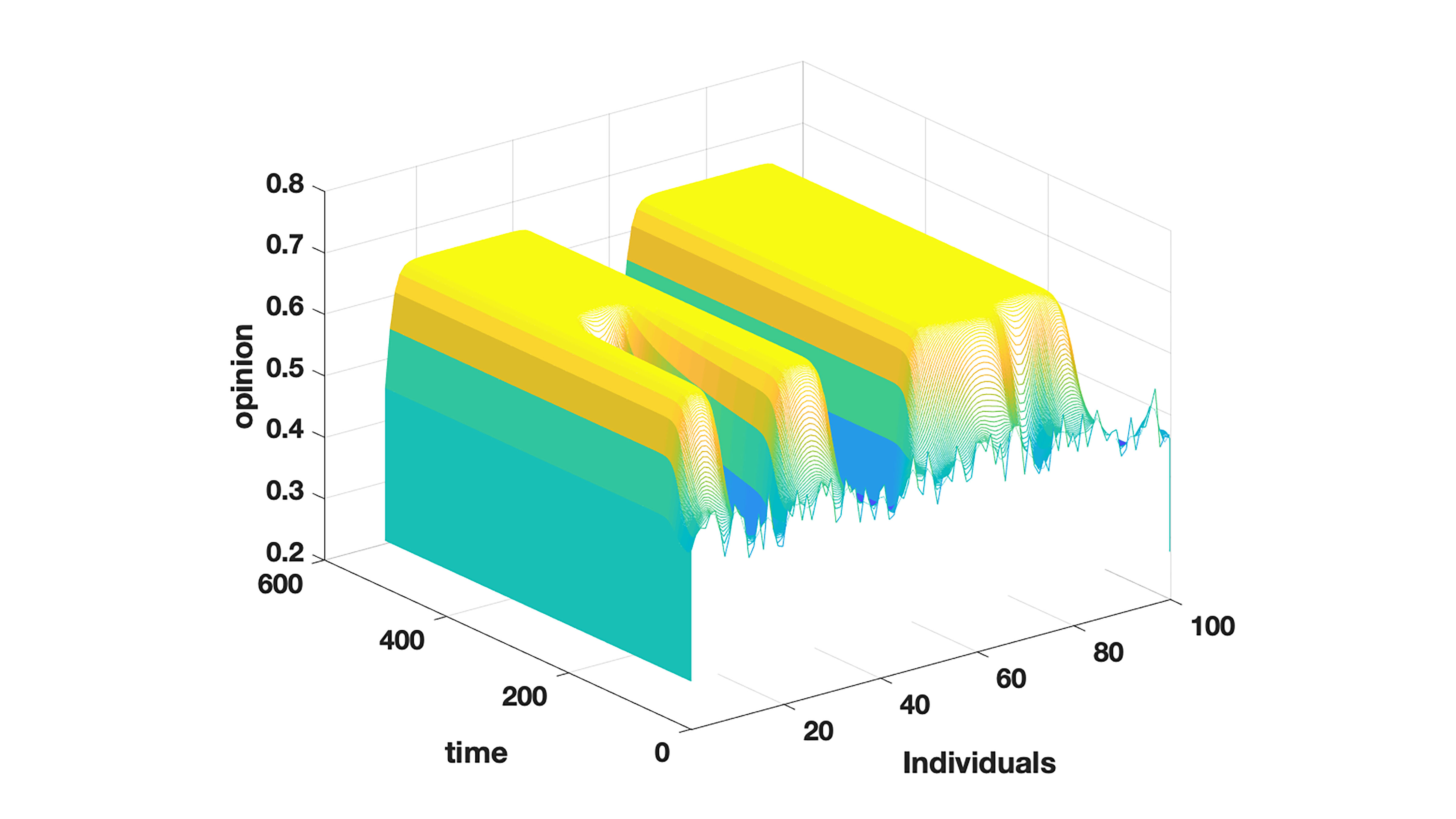
Simulations Show Extreme Opinions Can Lead to Polarized Groups
In this week’s Chaos, researchers use a theoretical model to examine what effect extreme views have on making the entire system more polarized. The group’s network-based model extends a popular approach for studying opinion dynamics, called the Cobb model, and is based on the hypothesis that those with opinions farther from the middle of a political spectrum are also less influenced by others, a trait known to social scientists as “rigidity of the extreme.”
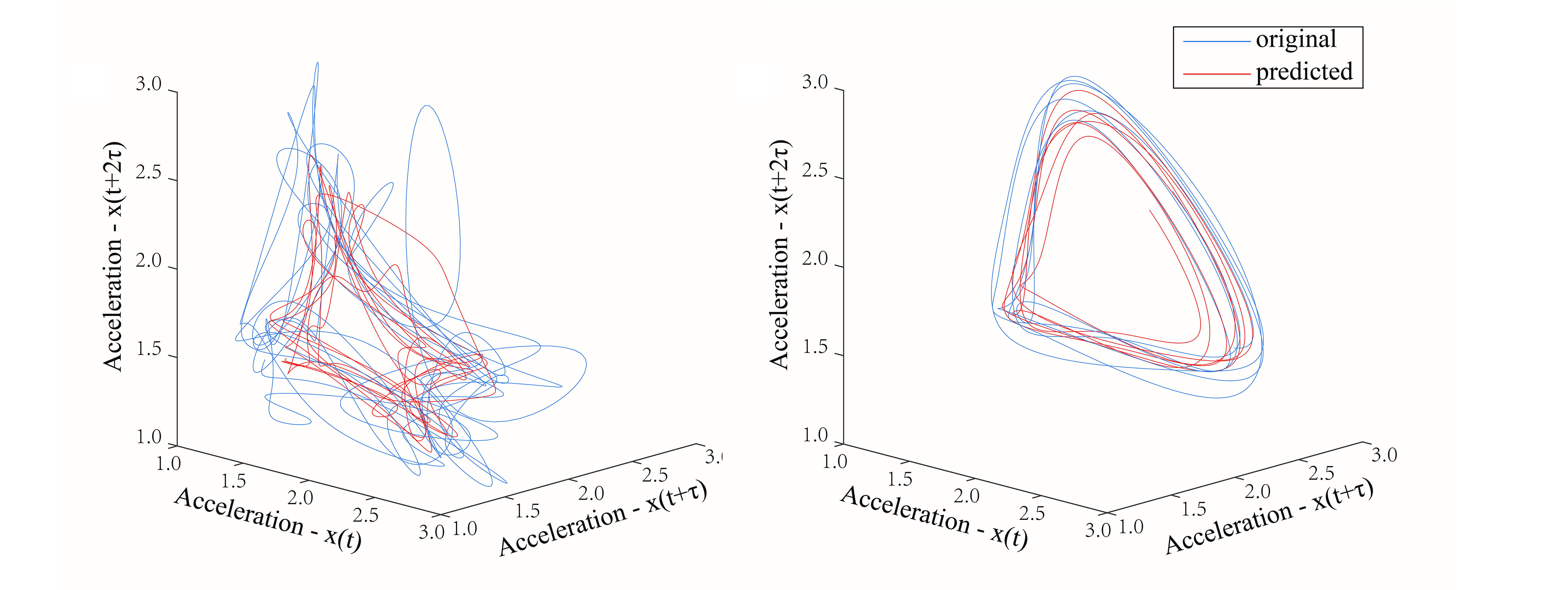
Duchenne Muscular Dystrophy Diagnosis Improved by Simple Accelerometers
Testing for Duchenne muscular dystrophy can require specialized equipment, invasive procedures and high expense, but measuring changes in muscle function and identifying compensatory walking gait could lead to earlier detection. This week in Chaos, researchers present a relative coupling coefficient, which can be used to quantify the factors involved in the human gait and more accurately screen for the disorder. They measured movements of different parts of the body in test subjects, viewing the body as a kinematic chain.
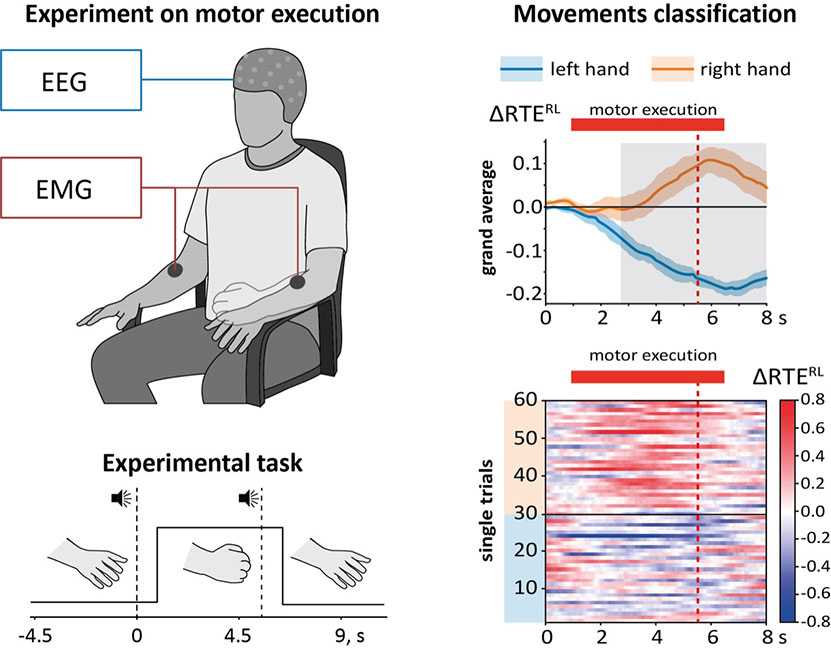
Researchers Discover Method to Detect Motor-Related Brain Activity
Motor-related brain activity is of great interest to researchers looking for a better way to improve neurorehabilitation, and one factor to consider is the suppression of the specific rhythmic activity of neurons within the sensorimotor cortex of the brain. Studies indicate this feature suffers from variability when using traditional methods to explore it. In the journal Chaos, scientists in Russia are approaching the problem from a different angle to search for a more robust feature of brain activity associated with accomplishing motor tasks.
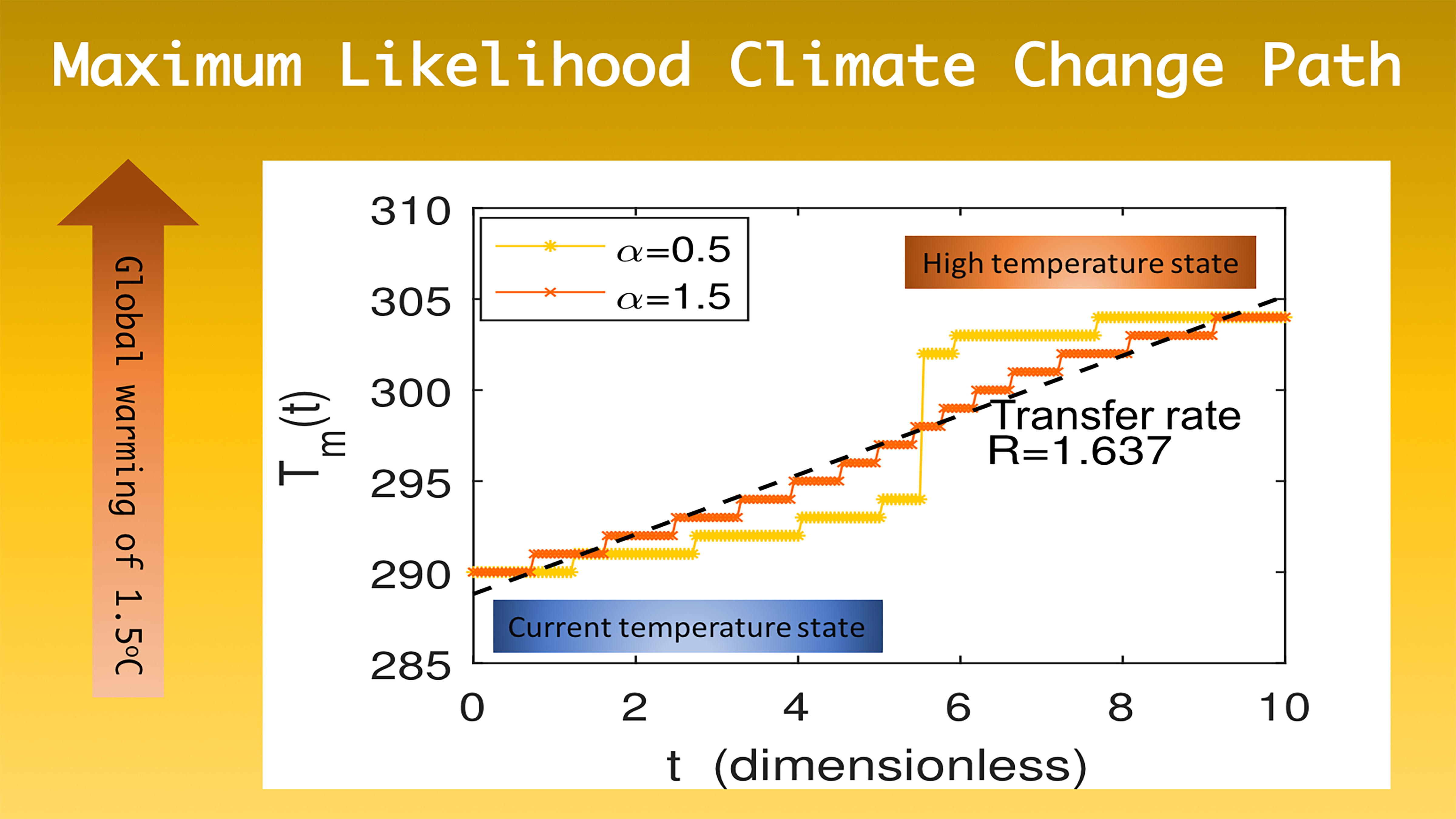
Mapping the Path of Climate Change
Predicting a major transition, such as climate change, is extremely difficult, but the probabilistic framework developed by the authors is the first step in identifying the path between a shift in two environmental states.
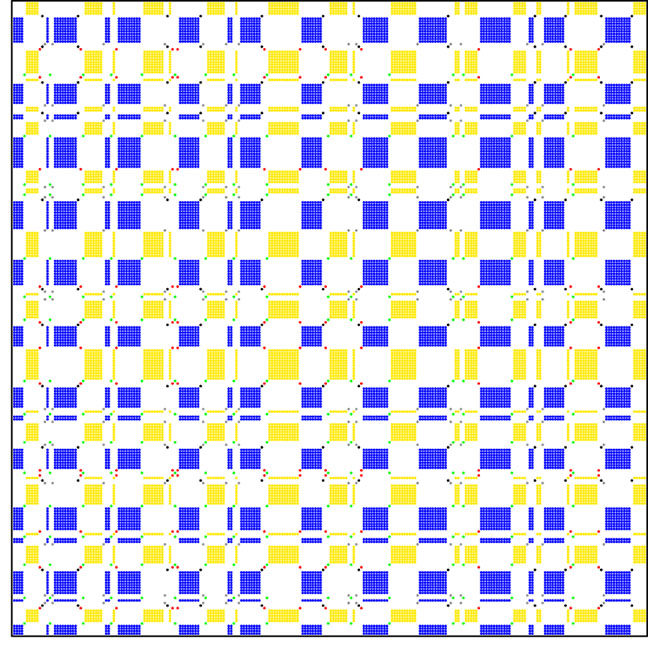
From Firearms to Fish — Following Patterns to Discover Causality
Mathematicians have successfully applied a new, pictorial approach to answer complex questions that puzzle analysts, such as, do media stories on firearm legislation influence gun sales? Cause-and-effect queries like this pop up in various fields, from finance to neuroscience, and objective methods are needed to deliver reliable answers.